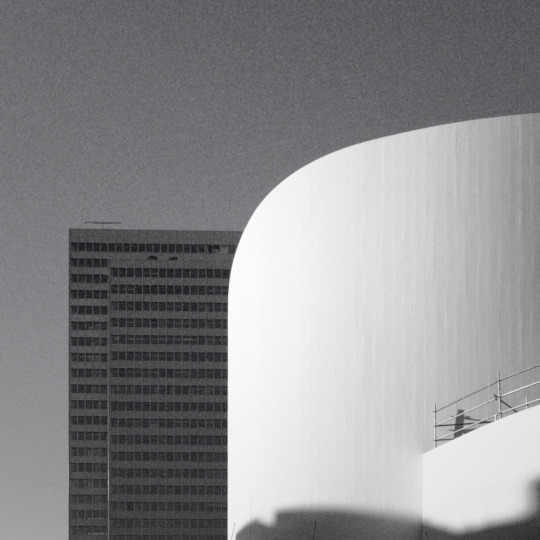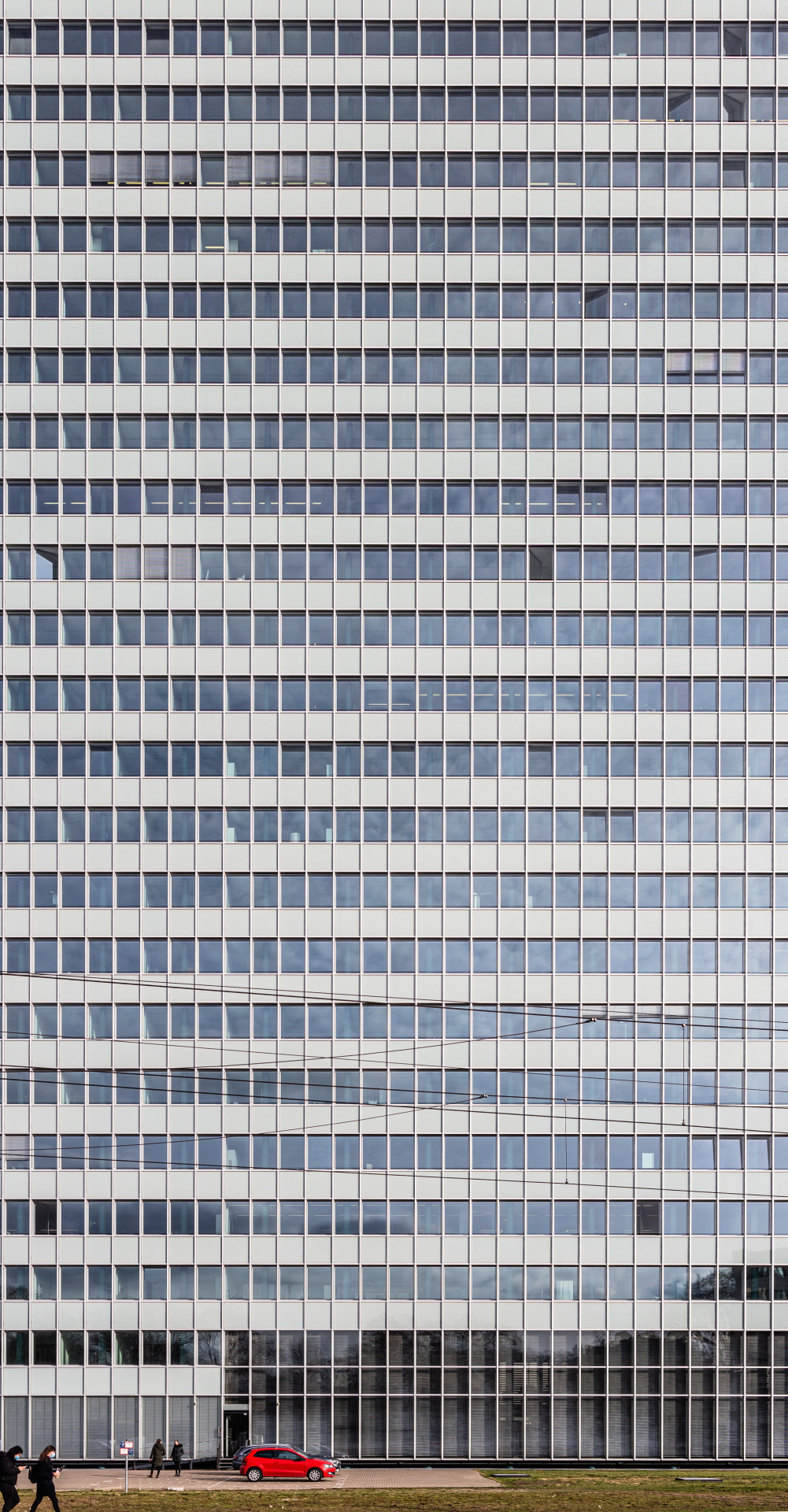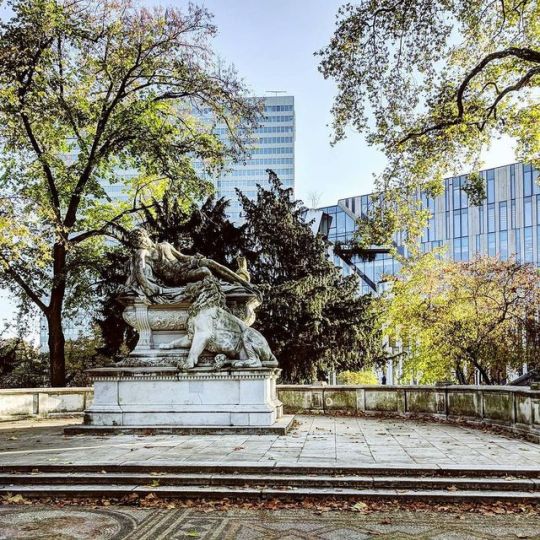#dreischeibenhaus
Photo

icons
schauspielhaus [ front ]
dreischeibenhaus [ back ] –
düsseldorf, germany // 01-2020
© 2020 waidwund-photo
#photographers on tumblr#original photographers#architecture#schauspielhaus#dreischeibenhaus#düsseldorf#waidwund photo#josch schlegel#traces of human life
202 notes
·
View notes
Text

Juxtaposition #4
5 notes
·
View notes
Photo

art and architecture /// #dreischeibenhaus #iconic #architecture #tonycragg #sculpture #art #barcelonachair #interior #red #silver #black #foyer #instagood #instagram (hier: Dreischeibenhaus) https://www.instagram.com/p/CoIQjkQKw7V/?igshid=NGJjMDIxMWI=
#dreischeibenhaus#iconic#architecture#tonycragg#sculpture#art#barcelonachair#interior#red#silver#black#foyer#instagood#instagram
1 note
·
View note
Photo

Dreischeibenhaus (1955-60) in Düsseldorf, Germany, by Hentrich Petschnigg & Partner
#1950s#office building#glass#steel#architecture#germany#nachkriegsmoderne#nachkriegsarchitektur#architektur#düsseldorf#hpp
488 notes
·
View notes
Photo

Dunkel war‘s, der Mond schien helle . . . . . #düsseldorf #hofgarten #hofgartendüsseldorf #dreischeibenhaus #teich #köbogen #nacht #nachtaufnahme #nachtfoto #availablelight #availablelightphotography #mondlicht #mondschein (hier: Hofgarten (Düsseldorf)) https://www.instagram.com/p/CcYH3FKMgMw/?igshid=NGJjMDIxMWI=
#düsseldorf#hofgarten#hofgartendüsseldorf#dreischeibenhaus#teich#köbogen#nacht#nachtaufnahme#nachtfoto#availablelight#availablelightphotography#mondlicht#mondschein
0 notes
Photo


dreischeibenhaus // düsseldorf stadtmitte
architects: helmut hentrich, hubert petschnigg, fritz eller, erich moser, robert walter
completion: 1960
renovation: 2012-2014
#nachkriegsarchitektur#nachkriegsmoderne#nachkriegsmoderne nrw#nachkriegsmoderne im rheinland#deutsche nachkriegsmoderne#nachkriegsarchitektur köln#nachkriegsarchitektur nrw#photography#architecture#architecture photography#hpp#street#street photography#high-rise#düsseldorf#nrw#design#germany#international style#post war architecture#post war modern#german post war architecture#helmut hentrich#hubert petschnigg#fritz eller#erich moder#robert walter
98 notes
·
View notes
Photo

Kinospot Produktion im Dreischeibenhaus in Düsseldorf @kreativfilmtv
0 notes
Text
Maslak Square, Istanbul Building
Maslak Square, Istanbul Building, Turkish Commercial Tower Development, Turkey, Modern Architecture Photos
Maslak Square in Istanbul
12 Jan 2022
Design: HPP Architekten
Location: Istanbul, Western Turkey
Maslak Square, Istanbul Building
Just a few years after completing the 26-storey, internationally award-winning AND Tower in Istanbul, HPP Architects is now delivering the city a new landmark. The building ensemble for the client Kapital Real Estate Development comprises two crystalline volumes of differing heights which will stand in the central business district of Maslak, making a previously inaccessible commercial site available for public use again.
The up and coming district of Maslak in Istanbul is a typical converted area whose significance is steadily increasing with the influx of international service companies. The design of this new building with its two separate towers will create an appealing passageway as an ideal route across the premises for residents and visitors.
The planned utilisation of the ground floor will ensure added value for the area: a market hall with surrounding green spaces will provide an attractive canvas for urban living. The entrances and foyers of the offices will be located on the first floor level. “The Maslak Square project is a typical urban repair. An area that has been cut off from the life of the city for decades is becoming an urban catalyst”, says Gerhard G. Feldmeyer, Senior Partner at HPP.
The two parts of the building with their differing heights blend perfectly into the lively topography of the city district and are linked to one another by three fully glazed bridges. The blocks can be used separately or by a single tenant. The two towers have different aspects, creating multiple connections to the city environment and consciously avoiding a “back” to the building. The trapezoid recesses stretching through multiple storeys reinforce the distinctive geometry of the building ensemble. Seen from above, the ensemble and its two glass canopies form a perfect square – hence the project name “Maslak Square”.
“The building has been designed to make the best possible use of natural light and natural ventilation in order to ensure sustainable use of resources”, explains Bugrahan Sirin, Partner and Office Director in Istanbul, who is managing this project. The two tower sections, set opposite one another a little distance apart, offer protection from prevailing winds as well as providing shade.
In addition, the vertical, contoured façade elements reduce the impact of direct sunlight and protect against overheating. Behind the perforated outline are panels that can be opened, giving users the option of individual ventilation. The materials and products selected for the construction and development are environmentally friendly, durable and recyclable. The building has been awarded LEED gold certification.
Maslak Square in Istanbul, Turkey – Building Information
Location: Istanbul
Client: Kapital Gayrimenkul Yatırım Geliştirme
ve İşletmeciki A.Ş.
Büyükdere Cad. Uso Center 245/15
Maslak 34398 İstanbul Turkey
Architect: HPP International Turkey Mimarlık ve Danışmanlık Hizm.Ltd.Şti.
Senior Partner: Gerhard G. Feldmeyer
Partner: Bugrahan Sirin
Certification: LEED Gold
GFA aboveground: 41.400 sqm
GFA underground: 35.000 sqm
GFA total: 76.400 sqm
Floors: 11 aboveground, 6 underground
Start of construction: 2017
Completion: 2021
About HPP
HPP Architects is one of Europe’s leading architectural partnerships with a full range of architec¬tural and master planning services. Since its foundation by Professor Hentrich, the 4th generation of HPP partnership today includes a global team of more than 25 nationalities and 450 architects, engineers, urban designers and specialists. Today it comprises 13 offices including 8 regional offices in Germany and 5 international branches in Turkey, China and Netherlands.
Among the most famous projects in the company’s history are the Dreischeibenhaus and the Vodafone Campus in Düsseldorf. Most recently, the L’Oréal Deutschland Headquarters in Düsseldorf, the 258m high Shenzhen North Station Huide Tower and the mixed-use quarter AND Pastel Istanbul were completed. Among others, the mixed-use quarter FOUR Frankfurt, realised jointly with UNStudio, the Alibaba Campus in Hangzhou, the vertical office campus Eclipse and the timber hybrid office building The Cradle are currently under construction.
Photography: HPP Architects / Photo: Cemal Emden
Maslak Square, Istanbul Building images / information received 120122
Location: Istanbul, Turkey
Istanbul Architecture Designs
Contemporary Istanbul Architectural Selection
Istanbul Architecture Designs – chronological list
Istanbul Architecture News
Architecture Tours Istanbul by e-architect
Arter Contemporary Art Museum, Istanbul, Western Turkey
Architects: Grimshaw
photo : Quintin Lake
Arter Contemporary Art Museum
Sanko Headquarters in Istanbul
Architecture: RMJM Milano
picture from architecture office
Sanko HQ Istanbul
Istanbul’s New Airport
image Courtesy architect office
New Istanbul Airport Building Design
Şişli City Hall Building
Design: Boran Ekinci Architects
photography : Cemal Emden
Şişli City Hall Building
Turkish Architecture
Turkish Architecture
Turkish Architect Offices – design office listings on e-architect
Watergarden Istanbul Building, Atasehir District
Design: GVDS – Gorkem Volkan Design Studio, Architects
image Courtesy architecture office
Watergarden Project in Atasehir District of Istanbul
Istanbul Buildings
Istanbul Architect – design firm listings
Foster + Partners Architects
Comments / photos for the Maslak Square, Istanbul Building design by HPP Architekten page welcome
The post Maslak Square, Istanbul Building appeared first on e-architect.
0 notes
Photo

Dreischeibenhaus, Arch. Helmut Hentrich and Hubert Petschnigg, Düsseldorf, 1960 #instaarchitecture #architecture #architettura #archilovers #architectures #archidaily #archdaily #architecturephotography #archi_focus_on #icu_architecture #architecturelovers #architectura #lookingup_architecture #igersarchitecture #architecturegram #jj_architecture #architexture #architectureporn #architecture_hunter #architect #architectural #arquitetura #architektur #gratteciel #skyscrapers #skyscraper #tower #grattacielo #archi_unlimited #dusseldorf (presso Düsseldorf, Germany) https://www.instagram.com/p/CXN7o_godCd/?utm_medium=tumblr
#instaarchitecture#architecture#architettura#archilovers#architectures#archidaily#archdaily#architecturephotography#archi_focus_on#icu_architecture#architecturelovers#architectura#lookingup_architecture#igersarchitecture#architecturegram#jj_architecture#architexture#architectureporn#architecture_hunter#architect#architectural#arquitetura#architektur#gratteciel#skyscrapers#skyscraper#tower#grattacielo#archi_unlimited#dusseldorf
1 note
·
View note
Photo

‘ dreischeibenhaus ’ – düsseldorf, germany // 04-2018
© 2018 waidwund-photo
#photographers on tumblr#original photographers#photographers on lensblr#dreischeibenhaus#architecture#urban#düsseldorf#waidwund photo#josch schlegel#traces of human life
182 notes
·
View notes
Text
Düsseldorf office is clad in “Europe’s largest green façade”
The 41,400 sq m Kö-Bogen II project, designed by local firm Ingenhoven Architects, has the appearance of a green hill in Gründgens Square, between the iconic Dreischeibenhaus and the Düsseldorf Theatre.To get more news about green facade, you can visit boegger.net official website.
Two of the building’s walls and its roof are clad with steel pots, planted with grass and a type of evergreen shrub known as hornbeam. The cladding, which also includes irrigation and drainage systems, was developed in association with the Beuth University of Applied Sciences in Berlin.
Ingerhoven comments on its website: “The ensemble marks the conclusion of an extensive urban renewal project in the heart of Düsseldorf. It also represents a paradigm shift: from an urban perspective, it signals a departure from the automotive era and a turn towards people-oriented planning. And with Europe’s largest green facade, it offers an urban response to climate change.”
According to Ingerhoven, the façade will offer the same benefits to the city centre as 80 deciduous trees.
The completion of Kö-Bogen II marks the end of an ambitious renewal project in the city that has transformed a formerly industrial area dominated by an elevated road into a public space. Ingenhoven won the design competition for the building in 2014, and work began in 2017. The developers are Centrum of Düsseldorf and B&L of Hamburg. The façade was designed in association with Werner Sobek of Stuttgart and the structural engineer was Schüßler-Plan Ingenieurgesellschaft of Düsseldorf.
0 notes
Photo

two of three slices /// #dreischeibenhaus #köbogen2 #blue #sky #white #clouds #concrete #green #architecture #düsseldorf #instagood #instagram (hier: Kö-Bogen) https://www.instagram.com/p/ChseBisq59H/?igshid=NGJjMDIxMWI=
#dreischeibenhaus#köbogen2#blue#sky#white#clouds#concrete#green#architecture#düsseldorf#instagood#instagram
0 notes
Photo

Dreischeibenhaus (1955-60) in Düsseldorf, Germany, by Hentrich Petschnigg & Partner
#1950s#high rise#office building#glas#steel#architecture#germany#nachkriegsmoderne#nachkriegsarchitektur#architektur#düsseldorf#hpp
465 notes
·
View notes
Photo

Warrior's memorial in Düsseldorf with Dreischeibenhaus and Kö-Bogen in the background. #düsseldorf #memorial #dreischeibenhaus #köbogen // Instagram: http://ift.tt/2zpEDBA
1 note
·
View note
Text
New Post has been published on Inspirationist
New Post has been published on http://inspirationist.net/8-kilometres-of-hornbeam-hedges-europes-largest-green-facade/
8 Kilometres of Hornbeam Hedges – Europe’s Largest Green Facade
8 kilometres of hornbeam hedges, over 30,000 plants – Europe’s largest green facade is complete. The facade is an essential element of the Kö-Bogen II commercial and office building by ingenhoven architects. The ensemble marks the conclusion of an extensive urban renewal project in the heart of Düsseldorf. It also represents a paradigm shift: from an urban perspective, it signals a departure from the automotive era and a turn towards people-oriented planning. And with Europe’s largest green facade, it offers an urban response to climate change. Giving back as much green as possible to the city is a task that ingenhoven architects have been working on for decades and across different climate zones. With its supergreen® concept, the office is taking a comprehensive approach to sustainability.
Today, where an elevated motorway once dominated the landscape, the Hofgarten has moved back into the heart of the city. Kö-Bogen’s sloping green facades face one another in a composition inspired by Land Art. The new building complex oscillates in a deliberate indeterminacy between city and park. The two structures form a dynamic entrance to Gustaf-Gründgens-Platz, which opens up the view to icons of post-war modernism – the clear austerity of the Dreischeibenhaus (1960) and the buoyant lightness of the Schauspielhaus (1970), whose renovation was also undertaken by ingenhoven architects. Kö-Bogen II is a contemporary response to these two historic landmarks, without competing with them. With studies, urban planning concepts, and concrete projects, Christoph Ingenhoven has been pursuing the idea of redesigning the centre of Düsseldorf since 1992.
The hornbeam was intentionally selected as a native hardwood species that keeps its leaves in winter. A comprehensive phytotechnological concept was developed together with Prof. Dr. Strauch, Beuth University of Applied Sciences, Berlin, to incorporate the hedges into the building design. The greenery improves the city’s microclimate – it protects against the sun’s rays in summer and reduces urban heat, binds carbon dioxide, stores moisture, attenuates noise, and supports biodiversity. The ecological benefit of the hornbeam hedges is equivalent to that of approximately 80 fully grown deciduous trees. This integration of nature into architecture offers a contemporary urban response to climate change.
Design info and images © ingenhoven architects
#architecture#biodiversity#climate change#comprehensive approach#contemporary response#Düsseldorf#germany#green facade#greenery#hornbeam hedges#ingenhoven architects#Kö-Bogen II#microclimate#office building#people-oriented planning#phytotechnological concept#sloping facade#supergreen® concept#sustainability#urban renewal project#urban response
0 notes
Text
Journal - Europe’s Largest Green Façade Has Been Completed in Germany
Architects: Showcase your next project through Architizer and sign up for our inspirational newsletter.
Over 30,000 plants and 5 miles of hornbeam hedges cover the newly completed Kö-Bogen II commercial and office building by German architecture firm Ingenhoven Architects. Located in Düsseldorf, the verdant structure features Europe’s largest green façade.
Ingenhoven Architects is a practice known as one of the pioneers of sustainable architecture. Their Kö-Bogen II marks the completion of an extensive urban renewal project on the Gustaf-Gründgens-Platz in the Hofgarten district of Düsseldorf. It sits where there was once an elevated motorway.
According to Ingenhoven Architects, the building “…represents a paradigm shift: from an urban perspective, it signals a departure from the automotive era and a turn towards people-oriented planning. And with Europe’s largest green façade, it offers an urban response to climate change.”
The five-story complex has the appearance of a large, green hill, with two angular sloping façades. The smaller building is topped with a publicly accessible lawn and contains restaurants and shops. They face each other in a composition inspired by landscape art.
Together they form a dynamic entrance to Gustaf-Gründgens-Platz, opening up views of iconic post-war buildings, the Dreischeibenhaus tower (1960) and Schauspielhaus theatre (1970). As stated by the architects, “Kö-Bogen II is a contemporary response to these two historical landmarks, without competing with them.”
Two of the building’s walls and its roof are entirely covered in a native evergreen shrub known as hornbeam that, according to Ingenhoven Architects, provide an ecological benefit equal to 80 fully grown deciduous trees. This cladding also includes irrigation and drainage systems and was developed in association with the Beuth University of Applied Sciences in Berlin.
While Kö-Bogen II injects color into Düsseldorf, it’s greenery actually improves the city’s microclimate by reducing urban heat, binding carbon dioxide, storing moisture, mitigating noise and supporting biodiversity. According to Ingenhoven Architects, giving back as much green as possible to the city is a task they’ve been working on for decades. This hulking, green structure marks a major step forward in the creation of sustainable architecture in urban environments.
Architects: Showcase your next project through Architizer and sign up for our inspirational newsletter.
All images via Dezeen
The post Europe’s Largest Green Façade Has Been Completed in Germany appeared first on Journal.
from Journal https://architizer.com/blog/inspiration/stories/europes-largest-green-facade/
Originally published on ARCHITIZER
RSS Feed: https://architizer.com/blog
#Journal#architect#architecture#architects#architectural#design#designer#designers#building#buildings
0 notes